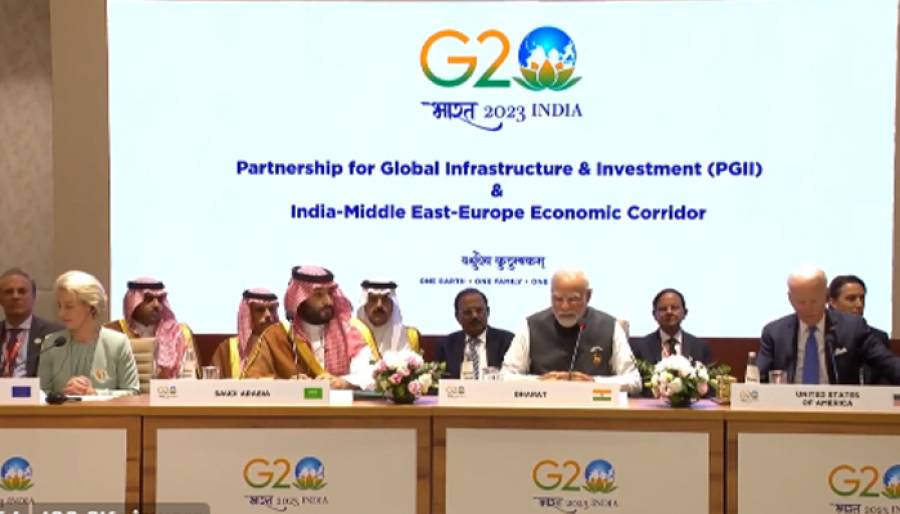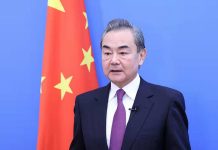By Asghar Ali Mubarak
ISLAMABAD: The Belt and Road Initiative (BRI) also known as ‘One Belt One Road’ is China’s biggest development project of this century, under which more than 66 countries are being connected on a commercial level. According to analyst and columnist Asghar Ali Mubarak, the Belt and Road Forum is a multi-stakeholder forum, its purpose is to convince countries around the world to be part of the Belt and Road project, in addition to projecting the project and Promotion is to be done while the third objective is to further strengthen relations with countries already involved in the project.
It should be remembered that the first Belt and Road Forum was held in Beijing in 2017, in which heads of different countries from around the world including the Secretary General of the United Nations also came. 122 countries of the world and 49 international organizations are also part of this important forum. .
The main objective of the Belt and Road Forum is to not only promote China’s project around the world, but also to make everyone aware of it and involved in it. Hence, it is an attempt by China to remove the concerns of other countries from the forum titled ‘Connectivity in an Open Global Economy’ on October 18.
Chinese President Xi Jinping announced the massive project in 2013, which is modeled on the ancient Silk Road. Its land route is called the ‘Silk Road Economic Belt’ which connects China to Europe through various road and rail corridors with almost all countries in Asia.
Another aspect of this is the ‘Maritime Silk Road’, which follows the maritime route across the world, including Africa and Southeast Asia.
An important part of these corridors is the China-Pakistan Economic Corridor, which is worth 62 billion US dollars from Gwadar to Khunjarab. These economic corridors include trade, transportation, energy, investment, cultural exchange and other basic economic infrastructure.
China’s economy is currently the second largest economy in the world after the United States, but it is the largest in terms of purchasing power. Most of the countries that China is including in the Belt and Road project are developing countries, which see the project as a very important opportunity for the development of the local economy.
According to the World Bank report, this development project will meet two-thirds of the world’s population, including at least one-third of the country’s gross domestic product. and promoting cooperation between China.
Leaders, think tanks and heads of institutions from around the world will gather at the high-level Belt and Road Global Cooperation Forum in Beijing. The Chinese leadership is trying to address international concerns through the Belt and Road Forum.
At the invitation of Chinese President Xi Jinping, Pakistan’s Caretaker Prime Minister Anwarul Haq Kakar will visit Beijing, China from October 17 to 18 to participate in the third Belt and Road Forum (BRF) of international cooperation held in Beijing. will The Prime Minister will attend the inaugural function of the Belt and Road Forum and will also address the high-level forum on ‘Connectivity in an Open Global Economy’ on October 18.
In the world, China has become the center of peace, stability as well as development and prosperity. China’s initial investment was $46 billion which later increased to $62 billion and this was an important gesture of friendship and cooperation at a time when no other country was willing to invest in Pakistan. In 2013, the historic CPEC program was launched.
According to the report, 2023 is the decade of CPEC, the next phase of CPEC aims to promote industrial cooperation and business-to-business linkages. China and Pakistan are celebrating 10 years of CPEC partnership regarding the economic development and change brought about by CPEC.
According to the report on the ten-year results of CPEC in Pakistan, the investment plan under CPEC between fiscal year 2015 and fiscal year 2030 is 62 billion dollars, in which 27.4 billion dollars of projects have already been completed and these projects created 200,000 jobs and added more than 6,000 MW of electricity to the national grid along with major highway and transmission line installations.
It should be remembered that major global powers are opposing the Belt and Road Initiative, i.e. BRI, but the countries involved in it support it. And one of the reasons for its opposition is China’s attempt to establish its influence on the world stage.
China’s Belt and Road Initiative has been criticized for using it to expand its political, economic, and military power, and it will leave developing countries in debt. Because of this criticism, China has started using the name ‘Belt and Road’ instead of ‘One Belt One Road’ for the project. It should be noted that China’s Belt and Road project is criticized that it is using this project to expand its political, economic and military power and that it will burden developing countries under its debt. Because of this criticism, China has started using the name ‘Belt and Road’ instead of ‘One Belt One Road’ for the project. The project aims to create global trade connectivity through various infrastructure projects involved in it.That is why, under this, a network of trains, roads and ports is being laid in the form of loans in many countries to open investment avenues there.
The US has been outspoken in its criticism of China’s economic policies and plans, calling the plan too ‘short-term benefits and long-term dependence on China’.
The United States also calls this Belt and Road project ‘Debt Diplomacy’ or ‘Debt Diplomacy’. Several countries that are also part of the project are now taking some precautions, and Sri Lanka is an example in this regard. America wants to protect its interests
Sri Lanka has become a victim of this situation when it had to completely hand over control of one of its ports to China in 2017 because Sri Lanka could not repay its external debt on time. ‘China gives loans, expands its influence and then seizes their assets. As in the case of Sri Lanka, the US has the luxury to blame the debt. It is therefore up to the Member States on what terms they are borrowing.
The fact is that China’s debt to Sri Lanka was less than 2% and Europe’s was more than 10%. Right now, this project is in its completion stages, and until the fruits of it come out in the next few years, it is not correct to say such things without data. Even in Pakistan, the Chinese debt is only two to three percent, if If we manage our economy properly, this debt can be easily repaid. For example, Malaysia has not taken loans that it thought it would not be able to repay, and similarly, Pakistan has yet to sign agreements where it is not satisfied.
According to experts, China wants to convince the international community through the Belt and Road Initiative (BRI Forum) that the Belt and Road is a comprehensive project and show flexibility in terms of repayment of loans to the participating poor countries. The possibility cannot be ruled out.
It should be noted that at the last session of the Belt and Road Forum in Beijing, China talked about ‘joint development’ instead of investing more and focused on dispelling criticism and doubts about this multi-billion dollar project. The Chinese president said in his address that China will not allow the currency to depreciate and will ensure its stability and that China does not believe in the policy of ‘turning your neighbor into a beggar’ and this is not China’s policy at all. .’
While not mentioning the ‘trade war’ with the US, President Xi Jinping made it clear that the project is not just for China. The Chinese President said, ‘Belt and Road is not a privileged club. This will benefit not only China’s interests but all its participants as China believes in continuous consultation, coordination and transparency with its partners.
During the speech at the Belt and Road Forum, the Chinese President gave a clear impression that he also wants to import, and this is not his weakness, it is part of his diplomacy. Part of China’s foreign policy is that they are also giving space to imports.
It should be noted that some countries consider this project as an attempt by China to establish geopolitical influence. This impression has also been tried to be refuted in this forum. An argument is also made that China can solve complex geopolitical problems through money. China does not call it a geo-strategic plan, according to China it is “part of efforts” aimed at creating a community of countries in the world that are the guarantors of the future of all humanity.
President Xi Jinping also said in his speech at the last opening session of the forum that “economic cooperation and free trade agreements are needed to achieve the common goal of peace and prosperity”, while the “Belt and Road” forum provides equal opportunities to all countries. does
A motto of Americans is ‘America first’, America is moving towards protectionism while China looks towards ‘globalization’ in terms of economy.
The reason behind the ongoing trade war between the US and China is that the US wants its products to reach European, Chinese and other global markets.
At the moment, the top US is a country that China wants to be a part of One Belt One Road, while India’s involvement in South Asia is also important, but currently both of these countries have internal problems, but hopefully In the coming years, these countries may also become part of its agreements in one form or another.
China is the biggest power in the region and India and the US have strengthened their ties to counter it. China considers India as its rival, the India-Middle East Europe Economic Corridor is a new example in this context. Recently, at the G20 meeting in India, the world leaders have agreed on a major project which has been named ‘India Middle East Europe Economic Corridor’. It has announced to start the India Middle East Europe Connectivity Corridor in comparison to China’s CPEC. In the conference of G20 countries, India, United Arab Emirates, Saudi Arabia, European Union, France, Italy, Germany and the United States will announce cooperation on communication and infrastructure construction. This is a historic and first of its kind cooperation on infrastructure. There will be initiative.
Recall that earlier in June 2022, the G7 countries had announced to provide 600 billion dollars for infrastructure projects in developing countries during the next 5 years. This project is also designed to counter China’s Belt and Road project.
US President Joe Biden and other G7 leaders announced the Partnership for Global Infrastructure and Investment on the sidelines of the Germany conference.
It should be noted that China’s Belt and Road project is currently working in more than 100 countries with the aim of developing a modern version of the ancient Silk Road trade route from Asia to Europe.






